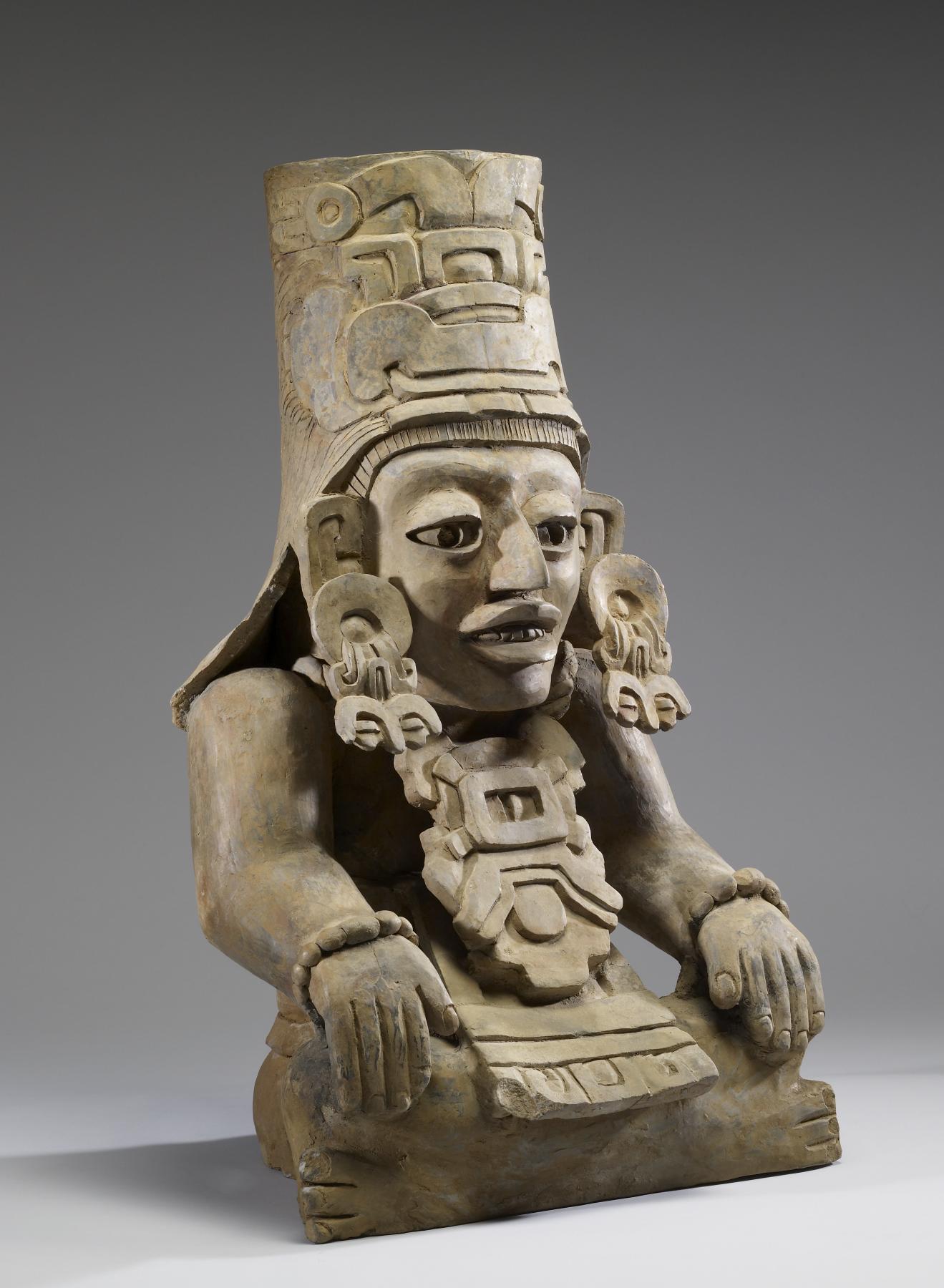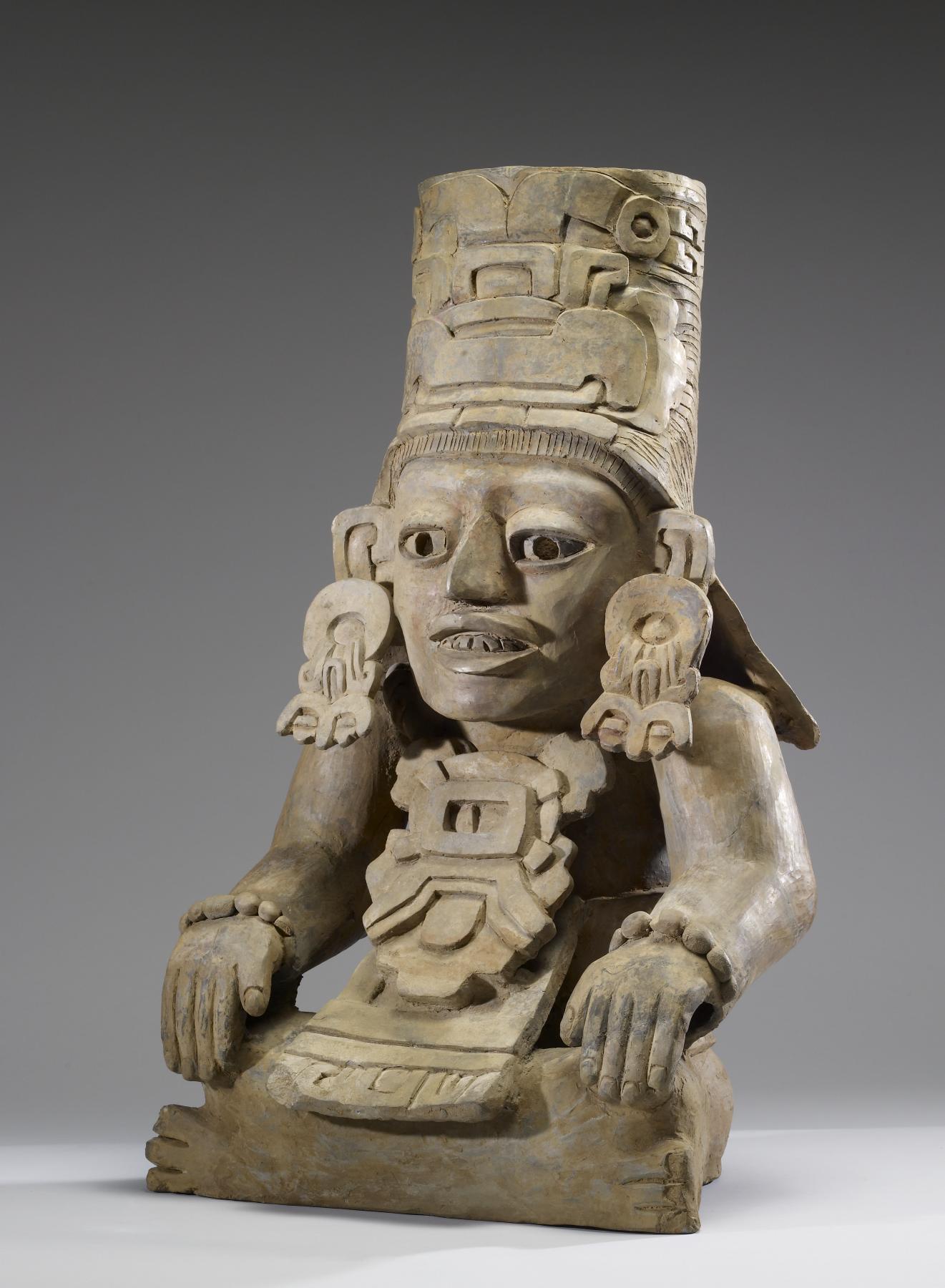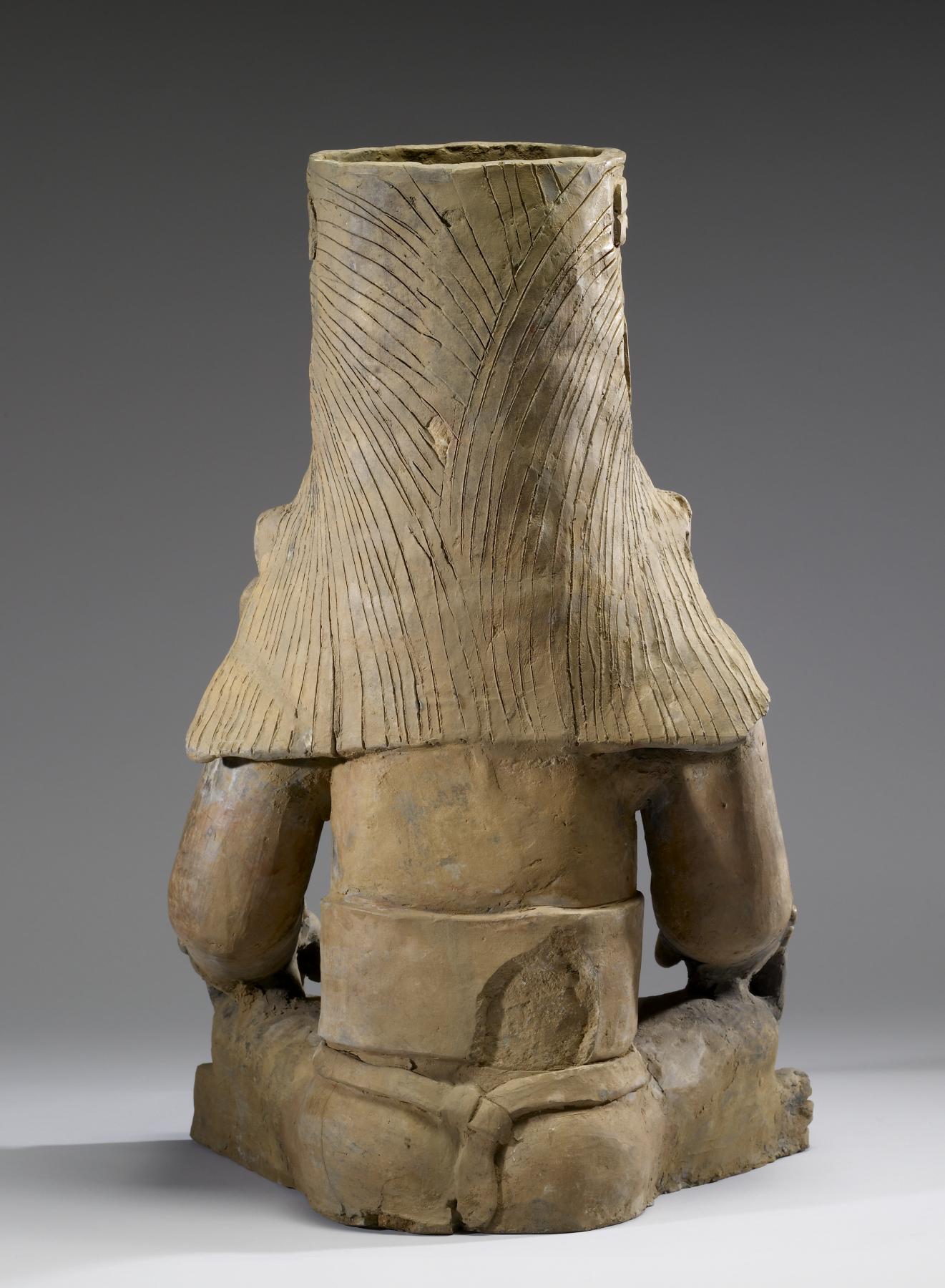Figural Urn
(Ancient Americas )
Large, figural urn effigies are unique to Zapotec sculptural traditions of the Late Preclassic and Classic periods. During Classic times, their forms and iconographic programs became institutionalized to such an extent that individual types can be identified and their symbolic meanings discerned. Most portray persons dressed as specific gods, especially the rain deity Cociyo and the maize god Pitao Cozobi. They are found in building caches, usually as single offerings, or more frequently in tombs, often accompanied by a number of smaller "attendant" figural urns. No evidence of smoke or carbon has been found inside the cylindrical containers at the figures' back, belying their interpretation as incense burners. In a few instances, the containers were found to hold obsidian blades, jadeite adornments, and the remains of organic materials, all of which likely represent offerings and ritual items from the moment of internment or perhaps later veneration rites conducted in the tomb. This commanding figure represents an impersonator of the maize god. The large size of the urn suggests that it was a tomb's main figure and, as such, may have symbolized a sacred ancestor of the tomb's occupant. His headdress features the hieroglyph Lape (drop, rain), which is the nineteenth day in the Zapotec calendar. Its iconographic origin is a bundle of maize leaves. The blending of maize god and rain imagery is mirrored in the figure's large, elaborate earflares, which allude to the rain god Cociyo. The trilobed element emerging from the earflares usually is found in the basal panels of other urns along with the image of an alligator. In all instances, the main figure is Cociyo. The ornate pendant covering the impersonator's chest is the maize god's pectoral glyph, which signifies the four-sided maize field. The presence of the maize god's chest ornament and the rain-maize headdress glyph unambiguously identifies the deity impersonated by this figure as the maize god and not Cociyo
Provenance
Provenance (from the French provenir, 'to come from/forth') is the chronology of the ownership, custody, or location of a historical object. Learn more about provenance at the Walters.
Ron Messick Fine Arts, Santa Fe, New Mexico [date and mode of acquisition unknown]; John G. Bourne, September 13, 1999, by purchase; by bequest to Walters Art Museum, 2017.
Exhibitions
| 2019-2021 | Excursions through the Collection: Portraiture, Adornment, and the Natural World. |
| 2012-2013 | Exploring Art of the Ancient Americas: The John Bourne Collection Gift. The Walters Art Museum, Baltimore; Frist Center for the Visual Arts, Nashville. |
Conservation
| Date | Description | Narrative |
|---|---|---|
| 1/1/2011 | Treatment | Though this figural urn is now in one piece, it was reassembled from many fragments before arriving at the Walters. Missing parts were re-created using modern restoration materials, shown in green in the photograph. The light brown color of the surface is not dirt but modern paint used to disguise the repairs. It is important that we identify modern repairs, because they can alter the object’s appearance. As we choose areas to sample for thermoluminescence dating, we need to make sure we are testing the original object. Four areas of this urn were sampled for thermoluminescence dating; all indicate it was fired 1,200 to 1,900 years ago, falling within the proposed date range of manufacture (450–650 CE). |
| 1/1/2011 | Examination | How can you date ceramics? The object themselves give us the answer. The three Zapotec sculptures, Pitao Cozobi (Maize God) Impersonator Urn and the Cociyo (Rain God) Effigy Urns, were made of clay, which when fired, turned into ceramic. Small samples were taken from both urns and sent to Oxford University in England for thermoluminescence (TL) dating. The principle behind TL analysis is that specific minerals within clay absorb energy at a predictable rate. When the clay is fired, the minerals release all their energy. This sets the “TL clock” back to zero, and then once again the clay minerals begin to absorb energy. When we tested samples from these urns, the absorbed TL energy was released and measured. This told us how long it had been since the urns were last fired. The TL data show that the urns were, in fact, created between 1,200 and 1,900 years ago. |
Geographies
Mexico, Oaxaca (Place of Origin)
Measurements
H: 27 1/16 x W: 16 5/8 x D: 12 5/8 in. (68.8 x 42.3 x 32 cm)
Credit Line
Bequest of John G. Bourne, 2017
Location in Museum
Not on view
Accession Number
In libraries, galleries, museums, and archives, an accession number is a unique identifier assigned to each object in the collection.
In libraries, galleries, museums, and archives, an accession number is a unique identifier assigned to each object in the collection.
2009.20.293








